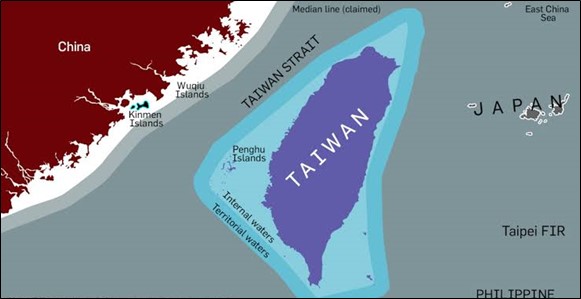China continued its live-fire military exercises in Taiwan Strait, while also announcing new exercises in the Yellow Sea.

Yellow Sea

Reference
Nadis of western Rajasthan are brimming with water amid the arrival of rains.
The Orans are the sacred forest groves in the villages. They are associated with the local deities.
|
Traditional Water Conservation Systems |
||
|
System Name |
Details |
Location |
|
Jhalara |
Rectangular-shaped stepwells that have tiered steps on 3 or 4 sides |
Jodhpur City, Rajasthan |
|
Talab /Bandhi |
Reservoirs that store water for household consumption and drinking purposes.
Talai - A reservoir with an area less than 5 bighas Bandhi - A medium sized lake Sagar or samand - Bigger lakes |
Natural Talabs in the Bundelkhand region.
Man made Talabs in Udaipur.
|
|
Bawari |
Unique stepwells that were part of the ancient networks of water storage. |
Rajasthan |
|
Taanka |
Traditional rainwater harvesting technique indigenous to the Thar desert region of Rajasthan. |
Rajasthan |
|
Ahar Pynes |
Traditional floodwater harvesting systems indigenous to South Bihar. |
Bihar |
|
Johads |
Small earthen check dams that capture and store rainwater |
Haryana, Rajasthan, Punjab, and western UP (Johads) Karnataka (Madakas) Odisha (Pemghara) |
|
Panam Keni
|
Wooden cylindrical Wells used by the Kuruma tribe of Wayanad |
Kerala |
|
Zing
|
Small tanks that collect melting glacier water |
Ladakh |
|
Kuhls
|
Surface water channels |
Mountainous regions of Himachal Pradesh |
|
Zabo or Ruza system |
Rainwater that falls on forested hilltops is collected by channels that deposit the run-off water in ponds created on the terraced hillsides. |
Nagaland |
|
Jackwells
|
Low-lying region of the Great Nicobar Islands is covered with jackwells (pits encircled by bunds made from logs of hard wood). It is used by the Shompen tribe |
Great Nicobar Islands |
|
Ramtek Model |
- |
Maharashtra |
|
Pat System |
- |
Madhya Pradesh |
|
Eri |
Tank system |
Tamil Nadu |
Reference
Recently, the Union Environment Minister inaugurated India’s largest online herbarium database, the ‘Indian Virtual Herbarium’ web portal.
The Botanical Survey of India, by 2024, plans to provide a platform to all the herbaria in the country, so that they can display their herbarium collection on the platform.
Reference
|
National Apprenticeship Training Scheme (NATS) |
National Apprenticeship Promotion Scheme (NAPS) |
|
Apprenticeship training for engineering graduates, diploma holders, general steam graduates, Technician and Technician (Vocational) apprentices. |
Apprenticeship training for the rest of the categories of apprentices. |
|
Implemented by the Department of Higher Education, Ministry of Education (MoE) |
Implemented by the Ministry of Skill Development and Entrepreneurship (MSDE) |
Reference
For the first time in its 80-year history, the Council of Scientific and Industrial Research has appointed a woman Director-General.
According to the Scimago Institutions Ranking World Report 2021, the CSIR (ranked 37th) is the only Indian organization among the top 100 global government institutions.
Reference